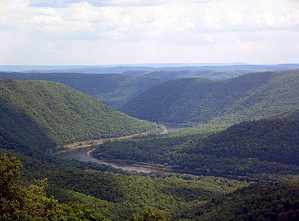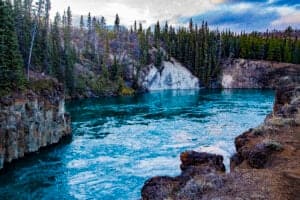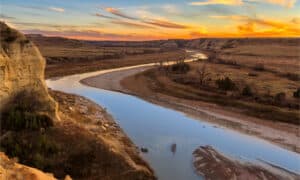Kentucky’s lush forests and beautiful bodies of water attract any tourist, but the Kentucky River is a unique sight. Providing water to over 700,000 people, this watershed is in Lee County, passing through a national forest. This massive river offers recreational activities like fishing and swimming, making it the prime spot for any warm day. Let’s take a look at the long Kentucky River and its journey across the Bluegrass State.
Kentucky River’s Size And Location
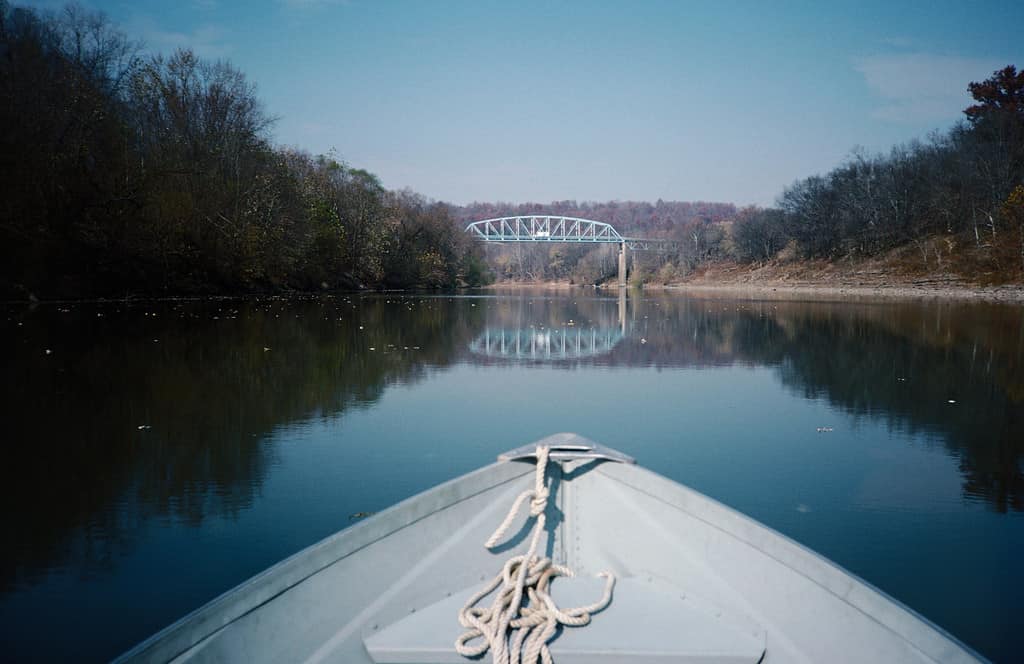
Flowing through the heart of Kentucky, the river’s forks connect in Lee County.
©William Alden / CC BY-SA 2.0 – License
The Kentucky River is the Ohio River’s tributary. Along the 259 miles that it stretches, it culminates with the North, South, and Middle Forks in Beattyville. While it covers the Cumberland Mountains at the start of the course, it also passes through north-central Kentucky. It covers 7,000 square miles, rising with the 40 inches of rain that the area gets annually.
The Red River, a tributary of the Kentucky River, is only a third of the latter’s length at 97.2 miles. However, Kentucky’s longest river that passes through it is the Mississippi River, reaching 2,320 miles across every state it touches. The Ohio River is a fraction of the size at 981 miles, while the Cumberland River is 688 miles.
The Forks of the Kentucky River
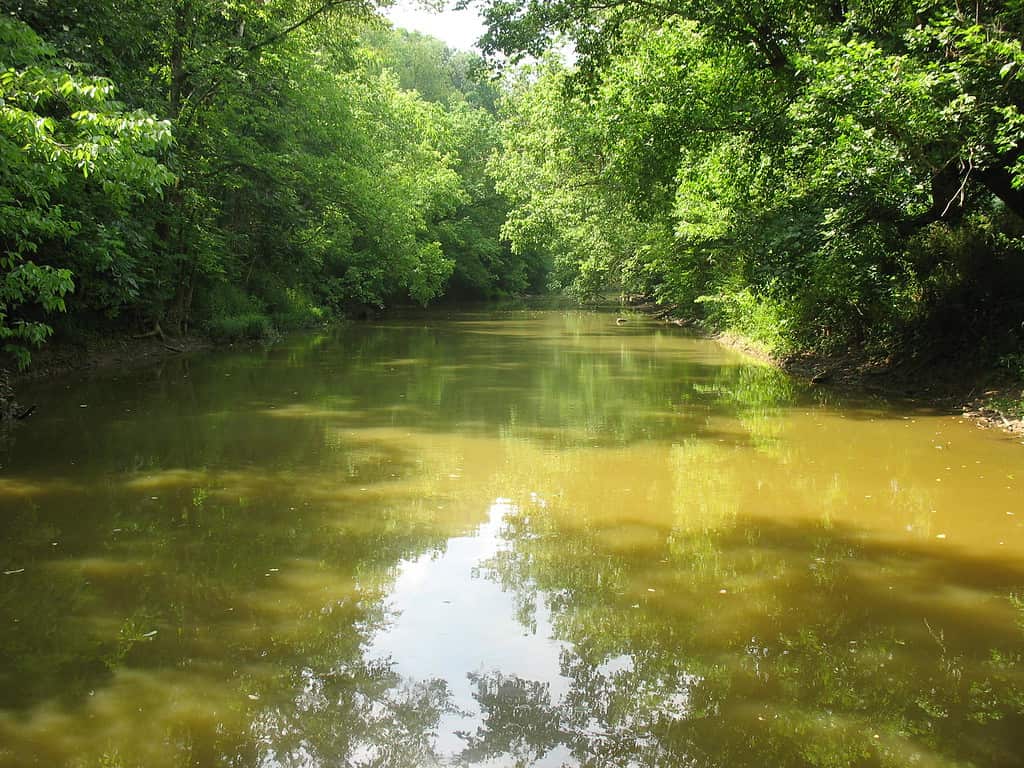
The North Fork of the Kentucky River is the longest stretch, reaching up to 45 feet deep.
©Chris Breeze / CC BY 2.0 – License
The entirety of the Kentucky River has three forks that connect it – the North Fork, South Fork, and Middle Fork. At 168 miles long, the North Fork starts it off, rising on Pine Mountain in Letcher County. As it flows, it takes on the northwest flow of Lotts Creek, Carr Fork, and Troublesome Creek before the Middle Fork of the river flows into it. Then, in Beattyville, it reaches the South Fork.
The Middle Fork stretches 105 miles, primarily in the southeast of Kentucky. Starting at the southern edge of Leslie County, it forms the Buckthorn Lake reservoir. Then, it flows into the North Fork and South Fork in Beattyville.
The South Fork is the shortest section of the Kentucky River, just 45 miles long. It starts in Clay County, flowing until Bullskin Creek reaches it. The river flows north through the Cumberland Plateau, continuing to Beattyville to meet the North and Middle Fork.
Kentucky River’s Ecology
Preservation in the Kentucky River Wildlife Management Area is a significant priority. Within this environment, farmland and woodland are all being reverted. With a dense forest along its banks, the Kentucky River provides an excellent source of nutrients for land animals and aquatic creatures. With sycamore trees and Carolina willows, the wildlife in Kentucky has plenty of space to graze and hunt. Here are some common animals you’ll find in the river.
Northern Leopard Frog
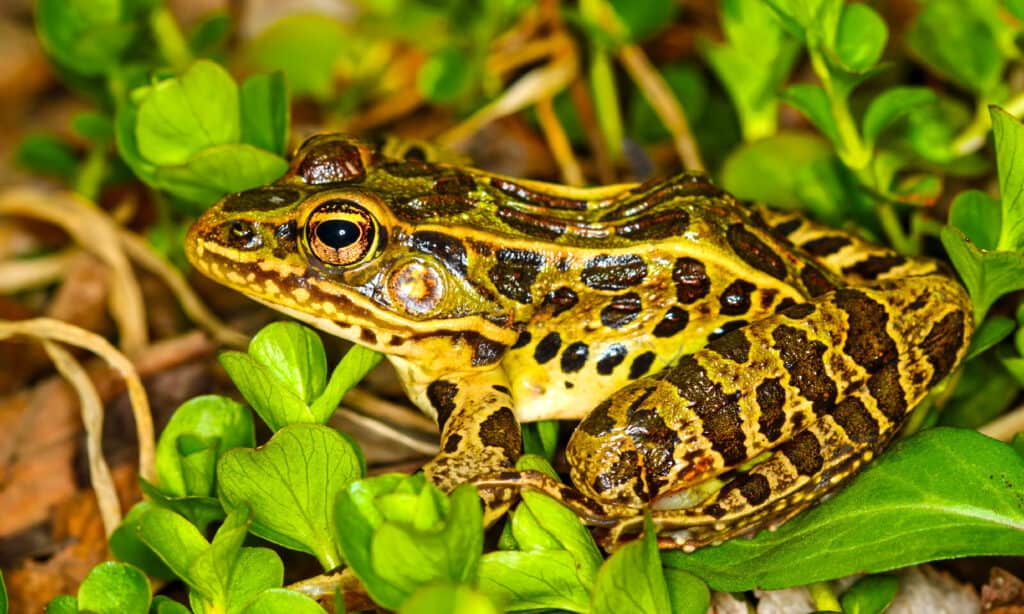
If their jaw is big enough, some northern
leopard
frogs are known to eat birds and garter snakes.
©Jason Patrick Ross/Shutterstock.com
Northern leopard frogs have a few different colors, but their most common body has bright green and deep brown variations. While most variations have brown spots along their back, the burnsi coloration usually only has it on their legs. They prefer marshier areas of the Kentucky River, sticking to slow-moving regions to keep them close to vegetation.
They commonly lived in most of the United States until the 1970s. Some scientists blame the drop in population on the loss of their natural habitats or exposure to pollutants, but a specific cause has yet to be found. The northern leopard frog population is still recovering, maintaining low numbers in much of the country. Their typical diet includes crickets, worms, flies, and tiny frogs.
Channel Catfish
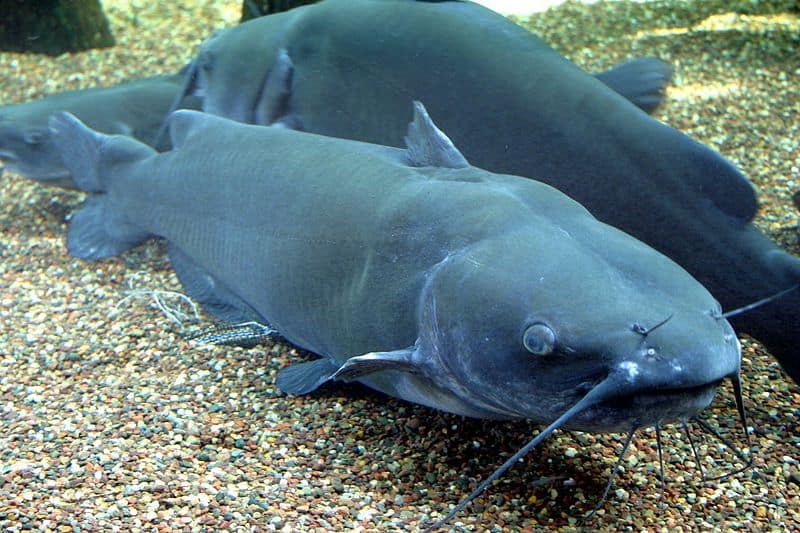
While most channel
catfish
weigh less than 4 pounds, some records show at least 100-pound catches worldwide.
©Ryan Somma, CC BY-SA 2.0, via Wikimedia Commons – License
The most popular catfish in the United States is the channel catfish. Their sense of taste and smell is incredible, and they swallow anything they eat whole. They have a few teeth, but they primarily rely on the high number of olfactory senses to find food. While they have poor vision, their ability to smell their prey nearby allows them to swim in the murky waters of the Kentucky River.
Like other variations, the channel catfish features four pairs of whiskers along their snout, giving them a cat-like face. They usually measure 12-24 inches, weighing 2-4 pounds.
Kentucky Spotted Bass
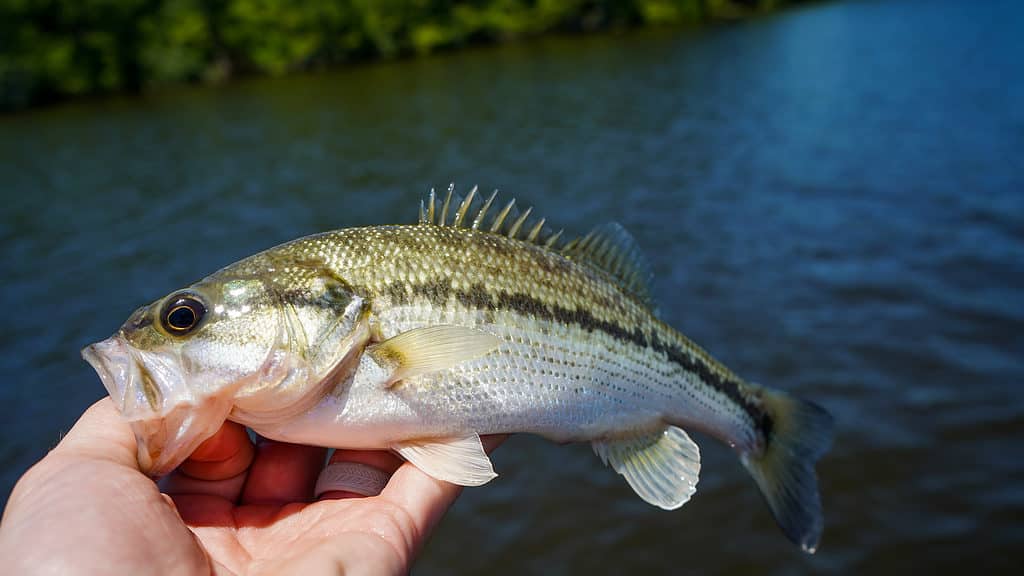
This spotted bass is sometimes mistaken for the largemouth bass, differentiated by a series of small black spots.
©Maclane Parker/Shutterstock.com
Kentucky spotted bass are freshwater fish found throughout the Kentucky River. While rivers and streams are the most common habitats for these fish, they sometimes live in lakes and reservoirs. They prefer to be concealed near logs and other submerged objects to protect them from predators. While the average size is 1-3 pounds, some of these fish reach 8 pounds if they grow to 24 inches.
Recreational Activities Of The Kentucky River
Most people visit the Kentucky River to take advantage of the supreme fishing spot. In 2001, the river attracted attention as the site of the largest goldeye caught in Kentucky at 2.04 pounds. Lucky struck again for local anglers with the state record for the largest bighead carp at 65.06 pounds.
During warmer months, the Kentucky River offers tubing, boating, and other activities on the water. With swimming in calmer areas, this waterway welcomes locals and tourists in all seasons.
A Map of the Kentucky River
The photo featured at the top of this post is © Patrick Jennings/Shutterstock.com
Thank you for reading! Have some feedback for us? Contact the AZ Animals editorial team.




